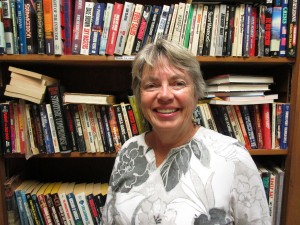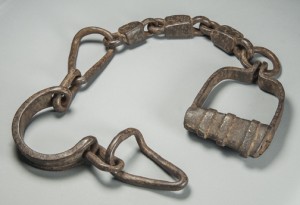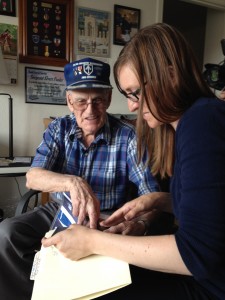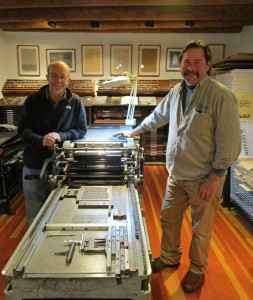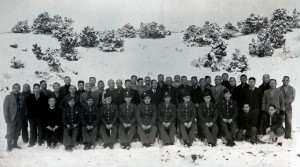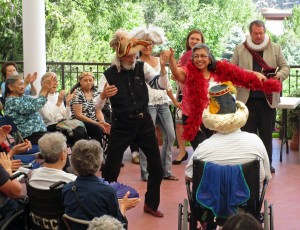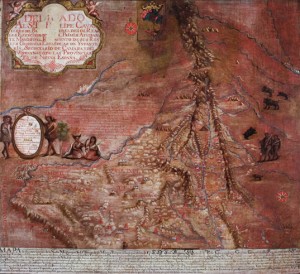 Tom Leech knows his way around beating things to a pulp. But don’t worry. No one’s in bodily danger. Yucca plants, hollyhocks and old rags, however, better beware.
Tom Leech knows his way around beating things to a pulp. But don’t worry. No one’s in bodily danger. Yucca plants, hollyhocks and old rags, however, better beware.
As director of the Palace Press, Leech considers the type of paper he prints on to be as important—sometimes, more important—as the choice of fonts. While he often scouts around to purchase the perfect material, he also whips up his own versions—most recently, with yucca fibers as part of a project for Eric Blinman, director of the state’s Office of Archaeological Studies and an expert on the traditional uses of yucca by Native Americans.
“It’s a good paper-making fiber because it’s extremely strong,” Leech said, “and it’s plentiful. But it’s difficult to process. You always end up with a couple nasty stab wounds, and it’s known for its soapiness.”
The first time he tried it, Leech said, he ended up mimicking an “I Love Lucy” episode in his home studio. “Suds poured out of the beater,” he said.
Now he moves the beater outside and lets the suds fall where they may. Other fibers and additives he’s used include barley straw, hollyhocks, iris leaves, old Levi’s, flax, hospital linens, beer cartons and Bibles. (The last two were for a recent broadside featuring a poem, “Permission,” by Barbara Minton.) This February, when the Museum of Art features Shakespeare’s First Folio, Leech may recycle an edition of Hamlet into paper for yet another project.
“To me, it’s sort of the yin-yang of the art form,” he said. “The two make a more beautiful whole. I don’t consider a printing job until I figure out the paper. When you read, you’re really looking at the paper—the tactile quality, the sound quality sometimes—all that is there, embedded in it.”
Not all pressmen make their own papers, said Leech, who’s also accomplished at creating marbled papers.
“It’s more a passion than a necessity,” he said. “We’re so used to looking at a blank sheet of white paper and not really seeing it. To me, paper is full of all sorts of mysteries and paradoxes. You see it and you don’t see it. It’s precious and it’s expendable. It’s born out of water, and yet water can easily destroy it.”

